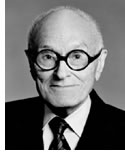 |
New York Architecture Images-New York Architects Philip Johnson |
|||
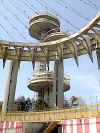 |

|
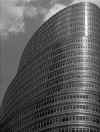 |
 |
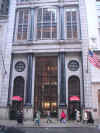 |
| 003 New York State Pavilion | 018 Bobst Library | 012 885 Third Ave Lipstick Building | 037
Sony Building |
051 Takashimaya |
 |
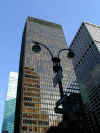
|
 |
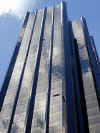 |
|
| 087
Museum of Modern Art |
002-Seagram Building | 075-1001 Fifth Ave | 110-Rockefeller Guest House | 1 CPW- Trump International Hotel and Tower (001) |
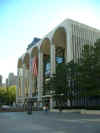 |
||||
| 002-Lincoln Center for the Performing Arts | ||||
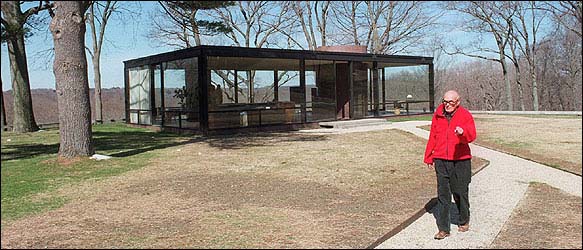
|
||||
| Philip Johnson outside the Glass House in 1998. | ||||
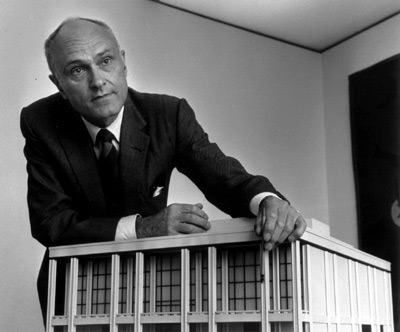
|
||||
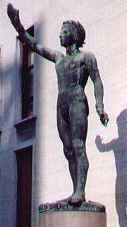 Click here for fascist architecture
influences on Philip Johnston
Click here for fascist architecture
influences on Philip Johnston
|
||||
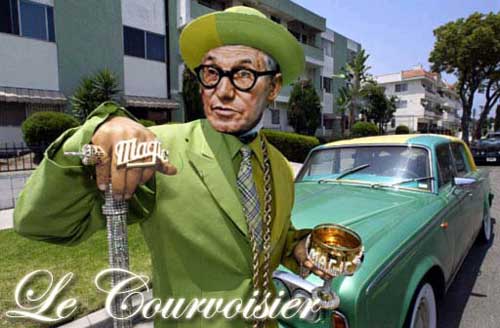
|
||||
|
January 26, 2005
Philip Johnson, Elder Statesman of U.S. Architecture, Dies at 98 By PAUL GOLDBERGER 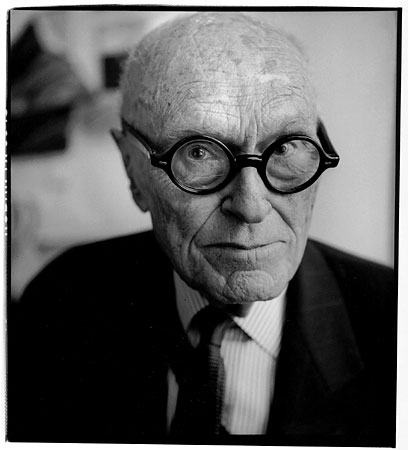 Philip Johnson. 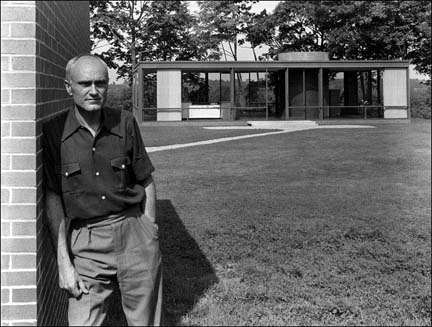 Mr. Johnson with his Glass House in July, 1949 in New Canaan, Conn. Audio Slide Show Philip Johnson, at once the elder statesman and the enfant terrible of American architecture, died yesterday at the Glass House, the celebrated estate he built for himself in New Canaan, Conn., said David Whitney, his companion of 45 years. He was 98 years old. Often considered the dean of American architects, Mr. Johnson was known less for his individual buildings than for the sheer force of his presence on the architectural scene, which he served as a combination godfather, gadfly, scholar, patron, critic, curator and cheerleader. His 90th birthday, in July 1996, was marked by symposiums, lectures, an outpouring of essays in his honor and back-to-back dinners at two venerable New York institutions he had played a major role in creating: the Museum of Modern Art, whose department of architecture and design he joined in 1930, and the Four Seasons Restaurant, which he designed as part of the Seagram Building in 1958. Mr. Johnson was the first winner of the Pritzker Prize, the $100,000 award established in 1979 by the Pritzker family of Chicago to honor an architect of international stature. In 1978, he won the Gold Medal of the American Institute of Architects, the highest award the American architectural profession bestows on any of its members. His long career was a study in contradictions. For all his honors, Mr. Johnson was in some ways always an outsider in his profession. His own architecture received mixed reviews, and frequently startled both the public and his fellow architects. The style of his work changed frequently, and he was often accused of pandering to fashion and designing buildings that were facile and shallow. Yet he created several buildings, including the Glass House, the sculpture garden of the Museum of Modern Art, and the Museum of Pre-Columbian Art at Dumbarton Oaks in Washington, that are widely considered among the architectural masterworks of the 20th century, and for his entire career he maintained an involvement with architectural theory and ideas as deep as that of any scholar. As an architect, he made his mark arguing the importance of the esthetic side of architecture, and claimed that he had no interest in buildings except as works of art. Yet he was so eager to build that he willingly took commissions from real-estate developers who refused to meet his own esthetic standards, and liked to refer to himself, with only partial irony, as a whore. And in the 1930's, this man who believed that art ranked above all else took a bizarre and, he later conceded, deeply mistaken detour into right-wing politics, suspending his career to work on behalf of Huey Long and later Father Charles Coughlin, and expressing more than passing admiration for Adolf Hitler. Mr. Johnson's foray into Fascism was over by the time the United States entered World War II, and two decades later he sought to make public atonement to Jews by designing a synagogue in Port Chester, N.Y., for no fee. But to the end of his life the contradictions continued. With his dignified bearing and elegant, tailored suits, he looked every bit the part of a distinguished, genteel aristocrat, but he played the celebrity culture of the 1980's and 90's as successfully as a rock star. He was far and away the best-known living architect to the public, and his crisply outlined, round face, marked by heavy, round black spectacles of his own design, was a common sight on television programs and magazine covers. With the exception of his brief involvement in right-wing politics, all of Philip Johnson's careers - historian, museum director and designer - revolved around architecture. He began his professional life as a writer, historian and curator and did not enter architecture school until he was 35. Even when he became one of the nation's most eminent practicing architects, he continued to be a major patron of institutions and of younger architects, whose work he followed with avid interest. He began his career as an ardent champion of Modernism, but unlike many of the movement's early proselytizers, he changed with the times, and his own work showed a major movement away from beginnings that were heavily influenced by the architect Mies van der Rohe. In the late 1950's, just after he had collaborated with Mies on the design of the Seagram Building on Park Avenue, he introduced elements of classical architecture into his buildings, beginning a long quest to find ways of connecting contemporary architecture to historical form. It was a quest that would begin with highly abstracted versions of classicism in the 1960's and culminate in a much more literal use of the architectural forms of the past in his revivalist skyscrapers of the 1980's. That phase of Mr. Johnson's career included such well-known monuments as the classically detailed pink granite AT& T Building (now the Sony Building) on Madison Avenue, which he completed in 1983 with John Burgee, then his partner; the Republic Bank Tower (now NCNB Center) in Houston, which used elements of Flemish Renaissance architecture; the Transco Tower in Houston, which recapitulated the setback forms of a romantic 1920's tower in glass, perhaps his finest skyscraper; and the PPG Center in Pittsburgh, a reflective glass tower whose Gothic form copied the shape of the tower of the Houses of Parliament in London. Institutional clients also got their share of Mr. Johnson's fixation with historical form: he designed a Romanesque structure in brick for the Cleveland Play House and a classical building based on the designs of the French visionary architect Étienne-Louis Boullée for the architecture school of the University of Houston. In the late 1980's Mr. Johnson's restless mind, having played a major role in shifting American architecture toward Postmodernism, with its re-use of traditional elements, moved on yet again. Fascinated by the intense, highly abstract work of a group of younger Modernist architects who were to become known as the Deconstructivists, Mr. Johnson began to incorporate elements of their architecture into his own work. He was particularly entranced with the buildings of the Los Angeles architect Frank Gehry, whose complex, seemingly irrational forms would appear to be the antithesis of the cool, rational, ordered architectural world of Mr. Johnson's first mentor, Mies, and much of his late work reflected Mr. Gehry's influence. Mr. Johnson, an urbane, elegant figure, was perhaps the best-known New York architect since Stanford White. Born to wealth, he and Mr. Whitney, a curator and art dealer, lived well - for many years in a town house on East 52nd Street that Mr. Johnson had originally designed as a guest house for John D. Rockefeller 3d, then in an elaborately decorated apartment in Museum Tower above the Museum of Modern Art - and always on weekends in the famous Glass House compound.Mr. Johnson had lunch daily amid other prominent and powerful New Yorkers at a special table in the corner of the Grill Room of the Four Seasons restaurant. His guest was as likely to be a young architect in whose work he had taken an interest, and for years his table functioned as a kind of miniature architectural salon. In the evenings, he was frequently seen at exclusive social events - for years by himself, and in the last decade, as he felt greater ease in making his relationship with Mr. Whitney public, with his companion. He was among the few architects whose comings and goings were considered worthy of notice in the gossip columns. He had been an active art collector since the days when, as a student traveling in Germany, he purchased a pair of Paul Klees directly from the artist. Eventually he came to be a busy collector of contemporary art: advised by Mr. Whitney, he filled his walls with paintings by Roy Lichtenstein, Andy Warhol and Jasper Johns when these artists were just gaining public attention, and he amassed one of the most complete collections of paintings by Frank Stella in private hands. Mr. Johnson not only lived and ate in places of his own design, he worked in them as well. Until 1986 his office was in the Seagram Building, the great skyscraper he designed with Mies, who was its principal architect. Mr. Johnson practiced alone there for some years, then collaborated with Richard Foster of Greenwich, Conn., for a time, and in 1967 formed a partnership with John Burgee. It was this partnership that transformed Mr. Johnson from a scholar-architect designing small to medium-size institutional buildings for well-to-do clients to a major force in American commercial architecture. Mr. Burgee's arrival coincided with the firm's movement toward a number of major and widely acclaimed skyscraper projects, including the I.D.S. Center in Minneapolis and Pennzoil Place in Houston. Mr. Johnson's own leanings were always toward the esthetic issues involved in design, and in Mr. Burgee he found a partner who could serve not only as a colleague in design but also as an executive overseeing the kind of large architectural office required to produce major skyscrapers. As if to mark Mr. Burgee's role, the Johnson-Burgee firm moved in 1986 into the elliptical skyscraper at 885 Third Avenue, between 53rd and 54th Streets, popularly known as the Lipstick Building, which the partners had designed together. But the partnership was not to last long beyond the move: Mr. Burgee, eager to occupy center stage, negotiated a more limited role for Mr. Johnson, and in 1991 exercised the prerogative he had as chief executive of the firm and eased Mr. Johnson out altogether. It proved an unwise decision, since the firm, crippled by an arbitration decision unrelated to Mr. Johnson, soon went into bankruptcy, all but ending Mr. Burgee's career. Mr. Johnson, his ties with his former firm having been severed, had no liability, and he went on to rent a smaller space in the Lipstick Building, gleefully hanging out his shingle and declaring himself in business as a solo practitioner at the age of 86. Before long, he had several commissions, including a cathedral in Dallas, and his career had recharged itself completely. Philip Cortelyou Johnson was born on July 8, 1906, in Cleveland, the son of Homer H. Johnson, a well-to-do lawyer, and Louise Pope Johnson. Supported by a fortune that consisted largely of Aluminum Company of America stock given him by his father, Mr. Johnson went to Harvard to study Greek, but became excited by architecture and spent the years immediately after his graduation in 1927 touring Europe and looking at the early buildings of the developing Modern architecture movement. He teamed up with Henry-Russell Hitchcock, at that time the movement's chief academic partisan in the United States, and their travels together resulted in their book "The International Style," published in 1932 and now a classic. "We have an architecture still," is how Mr. Johnson and Mr. Hitchcock concluded the book, which played a major role in introducing Americans to the work of European modernists ranging from Le Corbusier to Mies to Walter Gropius, then barely known here. In 1930, before "The International Style" was published, Mr. Johnson joined the department of architecture at a new institution in New York, the Museum of Modern Art. He moved the museum quickly to the forefront of the architectural avant-garde, sponsoring exhibitions on contemporary themes and arranging for visits by Gropius, Le Corbusier and Mies, for whom he also negotiated his first American commission. Mr. Johnson left the museum in 1936 to pursue his political agenda full-time, dividing his time between Berlin, Louisiana and his family's home in Ohio. By the summer of 1940, his infatuation with Fascist politics had faded, although as Franz Schulze, his biographer, wrote in 1994, it was never clear whether he withdrew because he changed his mind or because he had failed to achieve political success. "In politics he proved to be a model of futility," Mr. Schulze wrote.. "He was never much of a political threat to anyone, still less an effective doer of either political good or political evil." In 1941, at the age of 35, Mr. Johnson turned once and for all to the field that would occupy him for the rest of his life, and enrolled at the Harvard Graduate School of Design to begin the process of becoming an architect. While at Harvard, Mr. Johnson did what few students, even those of great means, have been able to do - he actually built the project he designed as a thesis. It was a house in the style of Mies, its lot surrounded by a wall that merges into the structure, and it still stands at 9 Ash Street in Cambridge, Mass. After wartime service in the United States Army - although the Federal Bureau of Investigation had investigated Mr. Johnson for his Fascist leanings, the Government decided he was sufficiently repentant to wear the uniform - he returned in 1946 to the Museum of Modern Art. At the same time he began slowly to build up an architectural practice of his own, combining it with his career as a writer and curator. He designed a small, boxy house, also highly influenced by Mies, for a client in Sagaponack, L.I., in 1946, but his first significant building, and still perhaps his most famous, was not for an outside client at all but, like the Cambridge house, for his own use: it was the Glass House at New Canaan, completed in 1949 with its counterpoint, a brick guest house. The serene Glass House, a 56-foot by 32-foot rectangle, is generally considered one of the 20th century's greatest residential structures. Like all of Mr. Johnson's early work, it was inspired by Mies, but its pure symmetry, dark colors and closeness to the earth marked it as a personal statement, calm and ordered rather than sleek and brittle. Over the years, Mr. Johnson added to the Glass House property, turning it into a compound that became a veritable museum of his architecture, with buildings representing each phase of his career. A small, elegant white-columned pavilion by the lake was built in 1963; an art gallery, an underground building set into a hill, with pictures from Mr. Johnson's extensive collection of contemporary art set on movable panels, in 1965; the sculpture gallery of 1970, a sharply defined, irregular white structure covered with a greenhouse-like glass roof; a library of stucco with a rounded tower that from a distance looks like a miniature castle (1980); a concrete-block tower, as much a piece of sculpture as a building, dedicated to his lifelong friend Lincoln Kirstein, the writer and New York City Ballet founder(1985); a "ghost house" of chain-link fence, honoring Mr. Gehry, who often used this material (1985), and finally, what Mr. Johnson called "the Monsta," an irregularly-shaped building of deep red with sharply curving walls, finished in 1995. The "Monsta" - Mr. Johnson could not quite bring himself to call one of his buildings a monster, but he felt its shape resembled it - is set at the gate of the estate and was designed to serve as a visitors center once the public was admitted to the property after his death. (Although Mr. Johnson kept an office in New York, working part time there until a year ago, he and Mr. Whitney have spent most of their time at the Glass House in recent years.) The Glass House compound is willed to the National Trust for Historic Preservation, which plans to operate it as a museum. In addition to Mr. Whitney, Mr. Johnson is survived by a sister, Jeannette Dempsey of Cleveland, now 102. After the Glass House was completed in 1949, Mr. Johnson received other residential commissions, including a number of houses in New Canaan. His first work at very large scale, however, was the Seagram Building, designed in association with Mies, though Mr. Johnson himself did the elegant Four Seasons restaurant within. The deep bronze Seagram, completed in 1958, is considered by many critics to be the finest postwar skyscraper in New York. By that time, however, Mr. Johnson was already becoming impatient with the limitations of the strict, austere Miesian design vocabulary. He began to explore a more decorative sort of neo-Classicism, which led to such designs as the Amon Carter Museum in Fort Worth (1961), the New York State Theater at Lincoln Center (1964) and the Elmer Holmes Bobst Library at New York University, designed in 1965 but not completed until 1973. His work in that period led the architectural historian Vincent Scully to refer to him as "admirably lucid, unsentimental and abstract, with the most ruthlessly aristocratic, highly studied taste of anyone practicing in America today." "All that a nervous sensibility, lively intelligence and a stored mind can do, he does,"Mr. Scully said. Mr. Johnson's active art collecting brought him a nearly continuous stream of commissions to design museums, and his ties to the Museum of Modern Art brought him the request to design the museum's 1951 and 1964 expansions beyond its original 1939 building, including the sculpture garden. He also designed the original Asia House gallery on East 64th Street, now the Russell Sage Foundation, as well as museums in Utica, N.Y., Fort Worth, Lincoln, Neb., and Corpus Christi, Tex. Despite his record as a museum designer and his long association with the Modern, the museum's board, of which Mr. Johnson was a member, decided in 1978 to hire a different architect to design its new West Wing. The job went to Cesar Pelli, and Mr. Johnson was deeply hurt. For some time, relations cooled between him and the museum he had supported nearly since its founding, but eventually they resumed, and Mr. Johnson and Mr. Whitney moved into the apartment tower above the museum designed by Mr. Pelli. In 1984, as a tribute to Mr. Johnson as its founding curator, the museum's department of architecture and design named its exhibition space the Philip Johnson Gallery. And the museum marked Mr. Johnson's 90th birthday with a pair of exhibitions: one of notable works of art that the architect had donated to the museum, and another of works given by architects in Mr. Johnson's honor. The beginnings of Mr. Johnson's late career as a major commercial architect were not in New York, however, but in Minneapolis, through an immense project in 1972 for Investors Diversified Services, a financial conglomerate that has since become part of American Express. A square-block complex containing a 51-story glass tower roughly shaped like an octagon, a hotel and a retail wing placed around a central glass-covered court, the design blended Mr. Johnson's interest in angular forms with a sensitive urbanism. It quickly became a focal point for downtown Minneapolis, and was the first of a generation of what might be called social skyscrapers, towers that did not merely house office workers but contained a myriad of public spaces as well. Among the many observers who were impressed by the I.D.S. tower was Gerald D. Hines of Houston, a real estate developer who had begun his career as a builder of warehouses but by the early 1970's had sought to make a new mark as the developer of much larger buildings by prominent architects. Mr. Hines hired Mr. Johnson and Mr. Burgee to design Pennzoil Place, a twin-towered complex of glass in downtown Houston that was completed in 1973. One of the most widely known skyscrapers in the country, Pennzoil Place consists of two trapezoidal towers placed so as to leave two triangular areas open on the site. These areas were covered with steel and glass trusses to create greenhouse-like lobbies; as a further formal gesture, each tower was given a slanted roof for the top seven floors. Pennzoil Place would prove widely influential, but five years later Mr. Johnson and Mr. Burgee moved away from it with the design for one of the most startling skyscrapers of the last generation, the AT& T (now Sony) headquarters in New York, the so-called "Chippendale skyscraper" of granite with a split pediment resembling an antique highboy. During the 1980's Mr. Johnson and Mr. Burgee also designed major skyscrapers in Atlanta, Boston, Chicago, San Francisco and Dallas, most of which, following the lead of the AT& . Building, were lavishly finished in granite and marble and imitated some aspect of the architecture of the past. Mr. Johnson also designed the Crystal Cathedral in Garden Grove, Calif., and the Museum of Television and Radio on West 52d Street in New York, and with Mr. Burgee produced plans through the 1980's for office towers for Times Square. Widely criticized, they have yet to be built. On his own, since the dissolution of his partnership with Mr. Burgee, he produced several projects for Donald J. Trump, including the glass tower at 1 Central Park West and projects for the Riverside South residential development; plans for a cathedral for a gay congregation in Dallas; and an office building for Berlin. Although he gave up formal scholarship when he became an architect, Mr. Johnson continued to write and lecture frequently. He constant theme, unchanged through all his stylistic variations, was his belief in the need to view architecture as an art - something that separated him, in fact, from the socially minded early Modernists whose cause he once championed so ardently. In a famous lecture in 1954 at Harvard titled "The Seven Crutches of Modern Architecture," he said, "Merely that a building works is not sufficient." Later, in an oft-quoted remark, he said, "I would rather sleep in Chartres Cathedral with the nearest toilet two blocks away than in a Harvard house with back-to-back bathrooms." Years later, Mr. Johnson told an audience, "We still have a monumental architecture. To me, the drive for monumentality is as inbred as the desire for food and sex, regardless of how we denigrate it." But he ended by arguing: "Monuments differ in different periods. Each age has its own. "Maybe, just maybe, we shall at last come to care for the most important, most challenging, surely the most satisfying of all architectural creations: building cities for people to live in." Copyright 2005 The New York Times Company
|
||||
|
"New York City is endless. They said that the buildings on Wall Street would ruin New York, and a generation ago they said that Rockefeller Center would ruin New York. They didn’t. And the reason these buildings go up so close to each other is because people want to be next to other people." One of the major American architectural minds of the twentieth century, Philip Johnson has played an enormous role in both understanding and creating the urban skylines of the country. As historian, curator, and practicing architect he has had a formative effect on generations of architects. Born in 1906, Philip Johnson grew up in Cleveland, Ohio. After graduating from high school he attended Harvard College, where he studied classics. Throughout the late 1920s, he became more and more interested in architecture and the growing modern aesthetic. At the age of twenty-six he became the director of the Museum of Modern Art’s new architecture department. These early years found Johnson primarily interested in a critical relation to architecture. He co-authored the influential book, THE INTERNATIONAL STYLE, which introduced the techniques of the Bauhaus to America. Throughout the 1930s, Johnson was pivotal in bringing the great minimalist style to the public. As both a writer and curator he championed the work of major modern architects including Le Corbusier, Walter Gropius, and Mies van der Rohe (eventually writing the first monograph on van der Rohe). Johnson was interested in their aesthetic embrace of structural elements . Their minimalism overtly addressed the role of the designer and builder, seeking to make the foundational elements of a building part of its aesthetic exterior. In his mid-thirties, no longer content with his role as a critic and curator, Johnson returned to Harvard, where he attended the graduate school of design and studied under the architect Marcel Breuer. By the late 1940s Johnson had graduated, and soon began designing houses and public buildings. His first and one of his most important works, was his own home in New Canaan, Connecticut. The home was a glass building with an exposed steel frame, placed in a rural setting. He made a number of other houses in a similar vane and throughout the 1950s designed many well-known works including the Seagram Building in New York City, done in collaboration with Mies van der Rohe. Though he began in the stark style of Mies van der Rohe’s work, by the 1960s he had turned to a more individual style that incorporated historical elements. This break was the first step in a personal style that created monumental twentieth century architecture that could aesthetically include domes and colonnades. A busy time for Johnson, the 1960s saw him make the Sheldon Art Gallery at the University of Nebraska, the New York State Theater in New York City, an addition to the Museum of Modern Art, and the New York State Pavilion at the World’s Fair. With the later work of the 1970s and 1980s, Johnson began to manipulate both texture and color on the exterior of his larger buildings. In 1978 he received one of his biggest commissions—designing the New York City AT&T Building (1978-1984). The 1990s saw a number of biographies and critical work examining him and his influence on architecture during the second half of the century. Perhaps the most important among all of these is Johnson’s own book, PHILIP JOHNSON: THE ARCHITECT IN HIS OWN WORDS, which brings together much of the thought and experience of nearly seventy years. Today, in his nineties, Johnson is one of the last of the modern architects and an important figure for the generations who grew up in the shadows of his buildings. |
||||
|
AIArchitect 10/2004 Gold Medalist Philip Johnson, 98, Retires from Practice The 1978 AIA Gold Medalist, 1979 Pritzker Prize winner, and 20th-century master of Modern American architecture, Philip Johnson, FAIA, who recently turned 98, announced from his iconic Glass House in New Canaan, Conn., on October 7 that he is withdrawing from architecture practice and from his firm, Philip Johnson/Alan Ritchie Architects. “I am leaving the firm in good hands to my partner of 10 years and design collaborator for over 27, Alan Ritchie, who will continue our quality and design excellence,” Johnson said in a statement to the press. “Alan is now representing me, and I am confident he will continue the legacy of Philip Johnson/Alan Ritchie Architects.” “We will miss Philip, but we are fortunate the firm is stronger than ever,” Alan Ritchie, AIA, said. “Philip and I have created a firm steeped in Philip’s design philosophy, and one that integrates influences from me, an experienced design staff, several who have worked with us for well over 10 years, and new design talent capable of exciting architecture.” Known among architects and the public alike for his “wit, flair for performance, creativity, and ability to integrate what is best in architecture,” Johnson retires after 60 years in practice. He worked three days a week in the firm’s New York City office until last fall, and more recently maintained a vocal presence from his home in New Canaan. “If it is true that the unthinkable has occurred, that Philip Johnson has in fact retired, one can only wish him Godspeed. He deserves time for rest and reflection after having lived to the fullest an extraordinary life,” said AIA Executive Vice President/CEO Norman L. Koonce, FAIA. “Unlike the man, however, the genius of his work will never rest. It will continue to challenge us and be part of our exploration of our own values and our art. This in itself is a kind of immortality, a living gift to succeeding generations.” “Philip has said he hopes to be remembered for his lifelong passions for architecture and art history and for his constant desire for change,” Ritchie said. “The public, fellow architects, students of architecture, and architecture critics will, no doubt, sculpt his epitaph in frank and eloquent terms.” ----------------------------- January 27, 2005 AN APPRECIATION | PHILIP JOHNSON A Tastemaker Propelled by Curiosity By NICOLAI OUROUSSOFF Philip Johnson, left, and the architect who influenced him early on, Mies van der Rohe, a few years before finishing the Seagram Building. At the height of his power, Philip Johnson's tentacles seemed to reach into every corner of his profession. As the founding director of the Museum of Modern Art's department of architecture and design, he almost single-handedly introduced American audiences to European Modernist buildings; he was a tireless promoter of emerging architectural talents, from Mies van der Rohe to Frank Gehry. And although he often played down his creative talent, he produced a number of 20th-century landmarks in his long, eclectic career, among them the 1949 Glass House, rightly considered a masterpiece of American design. Yet his greatest talent of all may have been his unquenchable curiosity, which prevented him, and by extension, his audience, from becoming mired in any specific architectural style or movement. In architectural terms, Mr. Johnson's output was uneven. His most memorable works are almost without exception his most intimately scaled, and they evoke a remarkable range of references that with hindsight, imbues them with unexpected subtlety. The Glass House in New Canaan, Conn., for example, was famously inspired by Mies's earlier design for the Farnsworth House in Plano, Ill., but its sleek Modernist appearance and slender brick base also suggested a traditional home with its skin stripped off. That catholic sensibility was also evident in his 1950 design for Dominique and John de Menil's residence in Houston, whose blank brick facade masked a more transparent interior that opened onto flowing gardens, echoing, in its small way, the Janus-like vision of precedents like the 17th-century French estate Vaux le Vicomte. But what most separates his work from more austere influences like Mies is its thinly veiled hedonism. The beauty of the Glass House, for example, arises from the quality of the glass, which is less about transparency than about the creation of a subtle interplay of visual images, from reflections of the surrounding trees to the movement of bodies inside. Similarly, the polished interiors he designed for the Four Seasons restaurant in Manhattan, with beaded steel curtains that conjure up a woman's slip, make it one of the sexiest rooms in the city 45 years after its completion. That bias toward aesthetics over social issues had been clear since his 1932 "International Style" show at the Modern, which he organized at the age of 26 with Henry-Russell Hitchcock. The show, which celebrated the work of such pillars of early Modernism as Mies, Le Corbusier and J. J. P. Oud, electrified an audience that was unfamiliar with Modernist achievements in Europe. But its relentless focus on form tended to overlook the deeper social goals that inspired such architecture. While Mr. Johnson may have made such work palatable to the American cultural elite, he also emptied it of some of its meaning. Nonetheless, that narrow devotion to aesthetics may also have been what allowed Mr. Johnson, in his later career, to slip so easily from one architectural style to the next. When the glow of late Modernism began to fade sometime in the early 1970's, Mr. Johnson was one of the first to abandon that vision in favor of postmodernism, a movement that he helped spawn and that eventually landed him on the cover of Time, clutching a model of his AT&T tower with its granite Chippendale top. A decade later, Johnson was exploring the more fragmented forms of architects like Frank Gehry, which led to a short-lived collaboration on an unbuilt guest house for the insurance magnate Peter B. Lewis. His forays into so-called deconstructivism yielded the canted walls and curved shapes of a visitors center at his estate in New Canaan. Mr. Johnson's fickleness often led to accusations that he was more an arbiter of architectural tastes than a creative groundbreaker. And in truth, few of his buildings from the 1970's and 80's could be considered distinguished. Most - banal corporate towers done on the cheap - seemed a winking testament to his famous quip that all architects are whores. Yet there were exceptions. The angular glass surfaces of his 1976 Pennzoil Place, for example, frame a thin sliver of sky that gives a palpable tension to what are otherwise a pair of conventional corporate towers. His Crystal Cathedral in Garden Grove, Calif., completed in 1980, is a mesmerizing composition of faceted glass planes. And in many ways, Mr. Johnson's restlessness may have been his greatest asset: not so much as an architect as in his effect on the culture of architecture. During his long reign, no one was a more eloquent advocate for architecture, and few were more open to new ideas. Nor has any American architect been more indefatigable in promoting new talents, many benefiting from his patronage. Mr. Johnson accomplished much of this through his position at the Modern, where he continued to curate shows until he was into his 80's. The 1988 show on deconstructivism, which he organized with Mark Wigley, may not have had the impact of his earlier successes, but it underlined Mr. Johnson's zest for exploring contemporary architectural ideas at an age when most would be content to play the role of dignified figurehead. His connection to the Modern was only the most visible aspect of his stature as architectural tastemaker, a position enhanced by his aristocratic charm and social connections. It was Mr. Johnson, for instance, who famously introduced Mies to the Seagram heiress Phyllis Lambert in the early 1950's; soon afterward she commissioned Mies and Mr. Johnson to design the landmark Seagram Building. Later, he was an ardent supporter of emerging talents then like Peter Eisenman and Mr. Gehry. His dinners at the Century club, meanwhile, were coveted as a means of entree into the tight-knit world of New York high culture, the kind of circles that guaranteed large-scale, high-profile commissions. Conversely, the architects he ignored sometimes felt as though the power he wielded could be devastating. But Mr. Johnson felt free to follow talent and ideas wherever they led him. That blazing openness to the new - that ease in gliding from style to style, from one milieu to another - seems virtually impossible to replace. Copyright 2005 The New York Times Company Modernist Living: A Primer
Architect Philip Johnson dies at age 98
By VERENA DOBNIK ASSOCIATED PRESS WRITER NEW YORK -- Philip Johnson, the innovative architect who promoted the "glass box" skyscraper and then smashed the mold with daringly nostalgic post-modernist designs, has died. He was 98. Johnson died Tuesday night in New Canaan, Conn., where he lived, according to Joel S. Ehrenkranz, his lawyer. John Elderfield, a curator at the Museum of Modern Art, also confirmed the death Wednesday. Johnson's work ranged from the severe modernism of his own home to the Chippendale-topped AT&T Building in New York City, now owned by Sony. He and his partner, John Burgee, designed the Crystal Cathedral in Garden Grove, Calif., an ecclesiastical greenhouse that is wider and higher than Notre Dame in Paris; the RepublicBank in Houston, a 56-story tower of pink granite stepped back in a series of Dutch gable roofs; and the Cleveland Playhouse, a complex with the feel of an 11th century town. "Architecture is basically the design of interiors, the art of organizing interior space," Johnson said in a 1965 interview. He expressed a loathing for buildings that are "slide-rule boxes for maximum return of rent," and once said his great ambition was "to build the greatest room in the world - a great theater or cathedral or monument. Nobody's given me the job." In 1980, however, he completed his great room, the Crystal Cathedral. If architects are remembered for their one-room buildings, Johnson said, "This may be it for me." He got even more attention with the AT&T Building in New York City, breaking decisively with the glass towers that crowded Manhattan. He created a granite-walled tower with an enormous 90-foot arched entryway and a fanciful top that seemed more appropriate for a piece of furniture. The building generated controversy, but it marked a sharp turn in architectural taste away from the severity of modernism. Other architects felt emboldened to experiment with styles, and commissions poured into the offices of Johnson-Burgee. Most were corporate palaces: the Transco II and RepublicBank towers in Houston; a 23-story, neo-Victorian office building in San Francisco, graced with three human figures at the summit; a mock-gothic glass tower for PPG Industries in Pittsburgh. "The people with money to build today are corporations - they are our popes and Medicis," Johnson said. "The sense of pride is why they build." But his large projects at times ran into a buzz saw of criticism from local preservationists and even fellow architects. In 1987, he was replaced as designer of the second phase of the New England Life Insurance Co. headquarters in Boston after residents complained about the project's size and style. Critics unearthed a quotation he had made at a conference a couple of years earlier: that "I am a whore and I am paid very well for high-rise buildings." Johnson said later his choice of words was unfortunate and he only meant that architects need to be able to compromise with developers if they want to see them built. Philip Cortelyou Johnson was born July 8, 1906, in Cleveland, the only son of Homer H. Johnson, a well-to-do attorney, and his wife, Louise. After graduating with honors from Harvard in 1927 with a degree in philosophy, he toured Europe and became interested in new styles of architecture. That interest became his life's work in 1932, when Johnson was appointed chairman of the department of architecture of the Museum of Modern Art in New York. That same year, he mounted an influential exhibition, "The International Style: Architecture 1922-1932." Johnson was especially enthusiastic about the work of the German architect Ludwig Mies van der Rohe, who called for designs that express a building's structure in the most direct and economical way possible. Under such a doctrine, if a building is supported by steel columns, they should be left visible instead of being masked behind stone or brick. January 31, 2005 |
||||